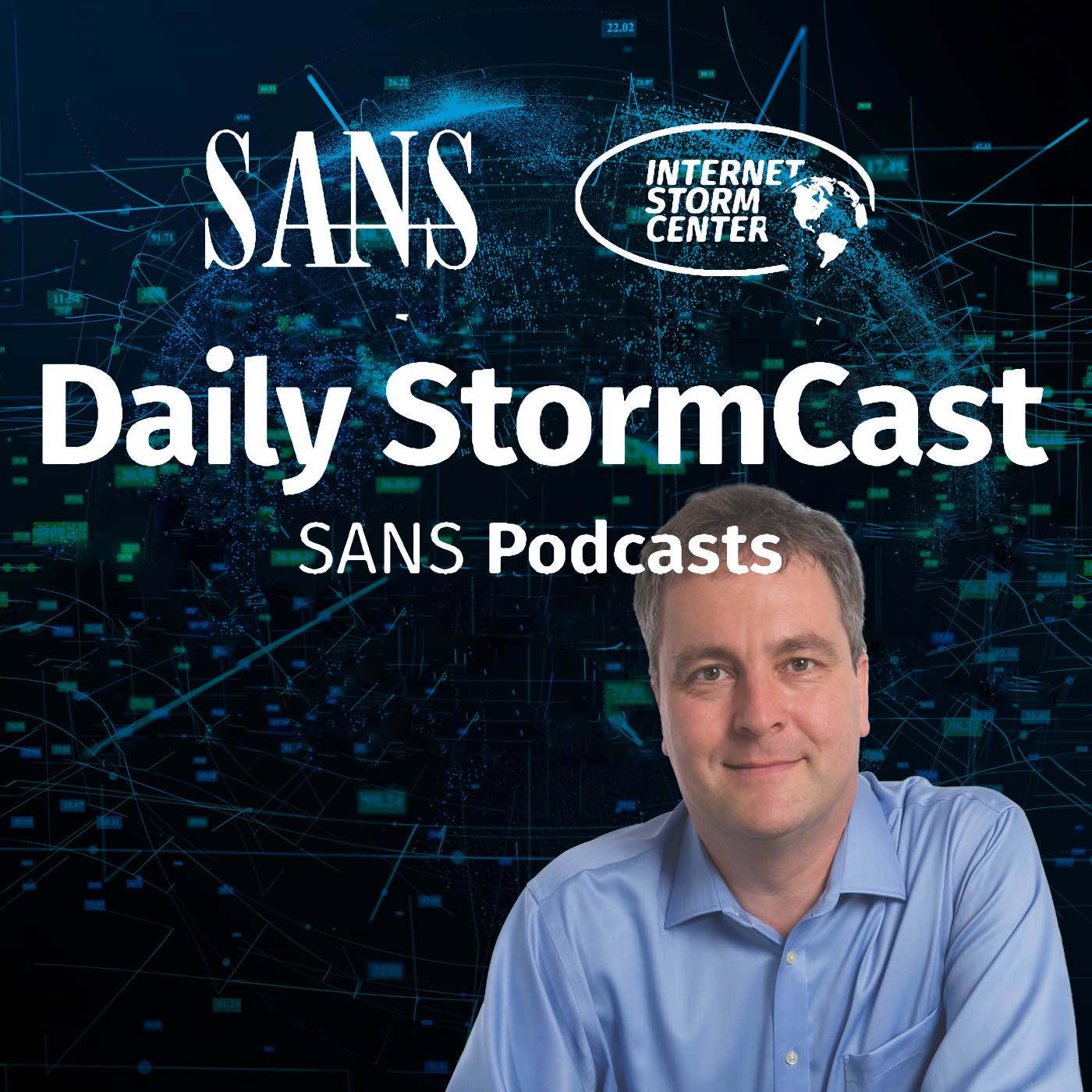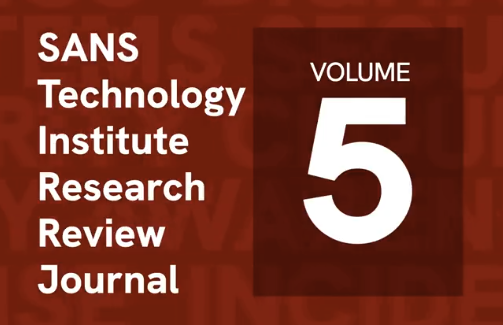Handler on Duty: Didier Stevens
Threat Level: green
Podcast Detail
SANS Stormcast Thursday, October 16th, 2025: Clipboard Image Stealer; F5 Compromise; Adobe Updates; SAP Patchday
If you are not able to play the podcast using the player below: Use this direct link to the audio file: https://traffic.libsyn.com/securitypodcast/9658.mp3
My Next Class
| Application Security: Securing Web Apps, APIs, and Microservices | Orlando | Mar 29th - Apr 3rd 2026 |
| Network Monitoring and Threat Detection In-Depth | Amsterdam | Apr 20th - Apr 25th 2026 |
Clipboard Image Stealer
Xavier presents an infostealer in Python that steals images from the clipboard.
https://isc.sans.edu/diary/Clipboard%20Pictures%20Exfiltration%20in%20Python%20Infostealer/32372
F5 Compromise
F5 announced a wide-ranging compromise today. Source code and information about unpatched vulnerabilities were stolen.
https://my.f5.com/manage/s/article/K000157005
https://my.f5.com/manage/s/article/K000156572
https://my.f5.com/manage/s/article/K000154696
Adobe Updates
Adobe updated 12 different products yesterday.
https://helpx.adobe.com/security.html
SAP Patchday
Among the critical vulnerabilities patched in SAP’s products are two deserialization vulnerabilities with a CVSS score of 10.0
https://support.sap.com/en/my-support/knowledge-base/security-notes-news/october-2025.html
https://onapsis.com/blog/sap-security-patch-day-october-2025/
Xavier presents an infostealer in Python that steals images from the clipboard.
https://isc.sans.edu/diary/Clipboard%20Pictures%20Exfiltration%20in%20Python%20Infostealer/32372
F5 Compromise
F5 announced a wide-ranging compromise today. Source code and information about unpatched vulnerabilities were stolen.
https://my.f5.com/manage/s/article/K000157005
https://my.f5.com/manage/s/article/K000156572
https://my.f5.com/manage/s/article/K000154696
Adobe Updates
Adobe updated 12 different products yesterday.
https://helpx.adobe.com/security.html
SAP Patchday
Among the critical vulnerabilities patched in SAP’s products are two deserialization vulnerabilities with a CVSS score of 10.0
https://support.sap.com/en/my-support/knowledge-base/security-notes-news/october-2025.html
https://onapsis.com/blog/sap-security-patch-day-october-2025/
Discussion
New Discussions closed for all Podcasts older than two(2) weeks
Please send your comments to our Contact Form
| Application Security: Securing Web Apps, APIs, and Microservices | Orlando | Mar 29th - Apr 3rd 2026 |
| Network Monitoring and Threat Detection In-Depth | Amsterdam | Apr 20th - Apr 25th 2026 |
| Application Security: Securing Web Apps, APIs, and Microservices | San Diego | May 11th - May 16th 2026 |
| Network Monitoring and Threat Detection In-Depth | Online | Arabian Standard Time | Jun 20th - Jun 25th 2026 |
| Network Monitoring and Threat Detection In-Depth | Riyadh | Jun 20th - Jun 25th 2026 |
| Application Security: Securing Web Apps, APIs, and Microservices | Washington | Jul 13th - Jul 18th 2026 |
Podcast Transcript
Hello and welcome to the Thursday, October 16th, 2025 edition of the SANS Internet Storm Center's Stormcast. My name is Johannes Ullrich, recording today from Jacksonville, Florida. And this episode is brought to you by the SANS.edu Undergraduate Certificate Program in Applied Cybersecurity. Xavier today explains an infostealer written in Python and how it deals with clipboard content. One of the standard features of infostealers is stealing data from the clipboard, often focusing on things like passwords that may be copy-pasted or maybe crypto coin addresses that are also often copy-pasted because who wants to type in a long random string like this. Some infostealers actually automatically recognize some of these string patterns as they're being copy-pasted to be more selective when it comes to actually exfiltrating the data. But not everything on the clipboard is text. You can also copy-paste images and that's what Xavier's malware is focusing on here. In this example, the Python script actually looks also for images that may be transferred via the clipboard and then exfiltrates them via telegram. Another very common command control channel for infostealers like this. And then we got some bad news for people using products made by F5. F5 today disclosed that they were breached. They claim an unspecified nation state actor for the breach and the breach apparently did last quite some extended time, like at least months. As part of the breach, source code was stolen from F5 and probably most importantly also information about unpatched vulnerabilities was stolen. And that of course is something that affects users of their products. Remember their products include products like for example their Big IP series but also NGINX is being maintained by F5. So if you're using any F5 products like this definitely pay attention. And paying attention here also means that F5 did today release a number of patches. And these patches are believed to be related to the patches or the vulnerabilities disclosed to the attacker during the incident. So that's definitely something that you do want to apply pretty quickly. They made that part of their quarterly security notification. Now the reason this is a part of the quarterly security notification here is in part because these vulnerabilities or actually the incident, F5 was aware of it for a while, but apparently based on guidance from the Department of Justice did somewhat delay the public release. On the other hand, there wouldn't have been probably too much that you could have done before having these patches available anyway. This may have been a little bit their calculus here. The vulnerabilities themselves are not terribly severe. The most severe one here is this SAP and SFTP vulnerability. It does allow for object code execution, but you must already have an elevated account in order to do this. So not just any account will work for this. And it really just helps an attacker to break out of the appliance mode in this particular case. The other vulnerabilities are similar in scope. There are some denial of service vulnerabilities, also some other remote code execution vulnerabilities, but also that require already some kind of elevated account. So there are really more privileged escalation of vulnerabilities at this point because those accounts are already able to execute some commands. If you're in the right place. The other ones are not going to see that. A couple of days ago also, and this may have been a kind of foreshadowing at this event, F5 did rotate their signing certificates and keys. This could actually be the biggest problem here. If the signing certificate key with a private key material here was lost, it wouldn't able an attacker to of course now sign software as F5. And if they were already in F5's environment for a couple of months and had access to that material for a couple of months, well, that could have happened sometime in the past. So this is definitely something to be aware of and make sure that you don't trust those now revoked certificates anymore. But we all know key revocation, certificate revocation can be a little bit tricky kind of to enforce across a large infrastructure like this. So definitely something that you may have to manually intervene here. So this affects first of all F5 customers, but again, NGINX is part of the F5 ecosystem. And in particular, the software being signed with F5 certificates. Well, that could also trip up some system administrator that's not normally an F5 customer as they, for example, download some related software. And then a little bit patched you stay clean up. We did yesterday get patches from Adobe. Twelve different products were updated from Adobe. Not sure if that's everything. I actually don't see Adobe Acrobat or a PDF viewer here. So that product, which is one that I usually watch, is not being patched this time. We do have updates for the Adobe Commerce solution. Nothing super critical as far as I can tell here. There's a approach escalation, a security feature bypass vulnerability. The arbitrary code execution vulnerability only got a CVSS score of 4.8. So probably nothing to worry about too much. And then we also have Adobe Experience Manager. That's a product where I think I've seen some exploits recently for. So that's why I mentioned this here. Mostly cross-site scripting vulnerabilities. And that, of course, always depends exactly where the particular cross -site scripting vulnerability appears to see how it could possibly be exploited. So apply your patches, but I don't see anything sort of out of the ordinary here. And SAP released its October patches. And with that fixed a number of critical vulnerabilities, most notably two insecure deserialization vulnerabilities in SAP Netweaver. There are a couple different components affected by essentially of the same type of vulnerability. Onapsis has a good write-up about it. And I'll link to them as well as to the SAP announcement about these updates. They now introduced a special filter function to hopefully help with some of these deserialization vulnerabilities. It's typical for these type of products. We had similar issues also with the corresponding Oracle products like WebLogic and such, where they are exposed to a wide range of objects that they typically can't easily filter. Because they have to work with all kinds of different software written by others. And that's probably why SAP is trying to introduce this filter module. The WebLogic solution was more sort of a block list, which of course they always sort of amend and depend to as new gadgets are being found to exploit these deserialization vulnerabilities. Well, that's it for today. Thanks for listening. Thanks for liking and thanks for subscribing to this podcast. You may have also received some email about us changing Slack channels. A little bit more about that tomorrow, but that's it for now. So thanks and talk to you again tomorrow. Bye.











